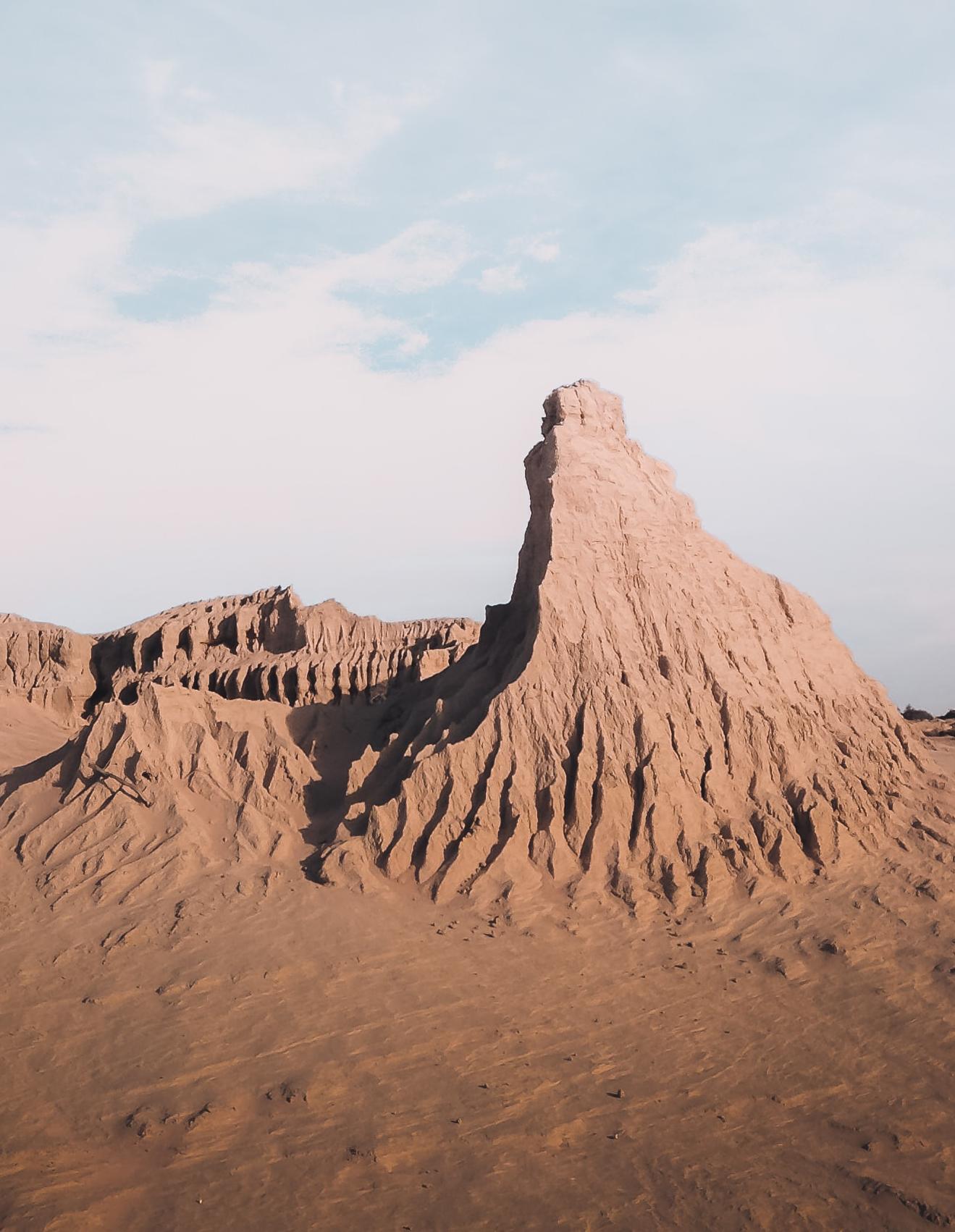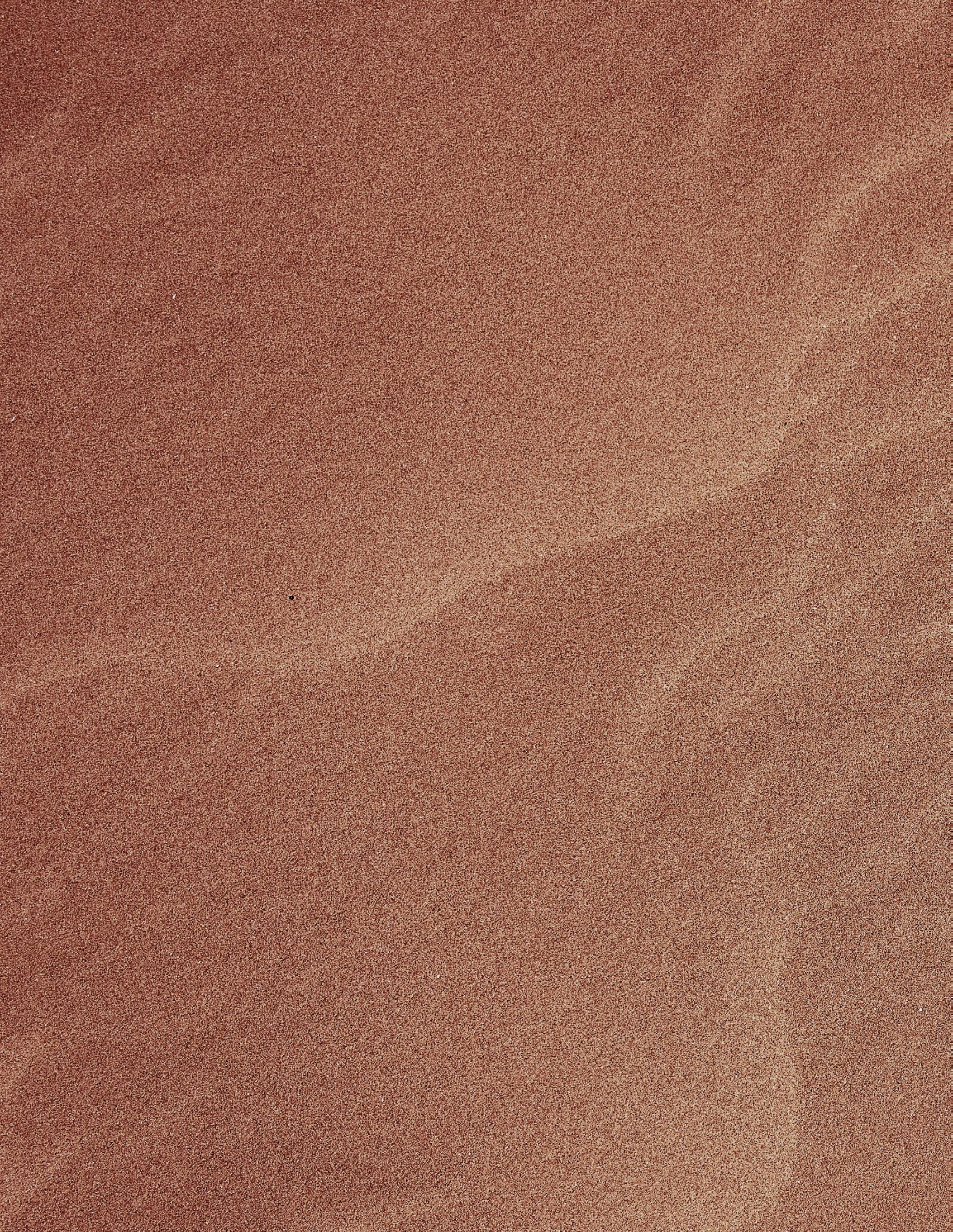
5 minute read
Journey to A Sacred Site
JOURNEY TO THE SACRED SITE OF LAKE MUNGO, AUSTRALIA
by James Bowler
Advertisement
In 1968, as a young geologist in search of Ice Age climatic change, I was mapping shorelines of a dry basin I named “Lake Mungo”. To my surprise, edible lake shells, flaked stones and other relicts of possible human presence kept appearing in strange places, often high in lakeshore dunes. I realized I was wandering in the footsteps of others much before me.
It was not until I observed burnt bones cemented in an ancient soil layer that my conviction of human occupancy was substantiated. But my estimate of soil and bone age lay beyond 20,000 years, beyond the archaeologically accepted age of human presence at that time. Summoned by my assurance, my skeptical archaeological colleagues came from Canberra to collect the evidence.
Great was the surprise when, in the process of removal, a clear piece of human mandible appeared. Closer
examination revealed these remains as those of a cremated young woman and at least greater than 20,000 years ago, right at the time of the last Ice Age. The result of cranial reconstruction by my colleague, the late Dr Alan Thorne, added even more surprise.
These were the cremated results of a young woman but with a fully modern morphology indistinguishable from ourselves.
Suddenly we faced an entirely new situation. The World’s oldest record of ritual cremation and right here in Australia with people just like ourselves!
MUNGO LADY AND MUNGO MAN
This first record of Mungo burials originally designated as Mungo I, became known as “Mungo Lady”, an assignation with almost saintlike status. Tribal elders had a new champion. Her returning Spirit had done its task! There was however more to come.

On Tuesday, February 26th, 1974, just 400 meters away from Mungo I site, my eye caught the tip of a white object showing through the carbonate-rich band exposed by active erosion. The left side of a carbonate encrusted human cranium lay with shallow sandcover complete with mandible and post-cranial remains. Its location, deep in the lakeshore dune, confirmed its great antiquity. This was a feature of major importance.

Figure 1. Fragments of burnt bone eroding from block of ancient soil carbonate eroding on eastern margin of Lake Mungo shoreline dune.

Figure 2. Articulated remains of Mungo man in carefully prepared grave in lakeshore dune sands.
Excavation two days later by Canberra colleagues revealed the articulated body of a mature male in a carefully prepared rectangular grave. Two additional items of great interest emerged before our eyes.
The body had been anointed with ochre, the red stain visible both on carbonate encrusted cranium and in traces of grave in-fill surrounding the upper body. Additionally, a large charcoal-stained patch recorded the legacy of a large fire located a short distance 1-2m away from grave outlines. Interred in deep shoreline location, analyses of grave and cover sands revealed burial at a time of substantial climatic change. A previous wet, lake-full environment had already begun to dry to a more arid, dusty desert dune active phase. Dating established the burial age at 40,000±2000 years ago of this individual, Mungo Man. Simultaneously, revision of earlier Mungo Lady age estimates provided a similar 40,000-year result, indistinguishable between the two.
The evidence of Mungo Lady cremation on one hand, the ritual burial, ochre anointing and cleansing fire of Mungo Man on the other, reflect a people of high intelligence. These were people with ritual symbolism in deep acknowledgment of lifedeath rites of passage. These ancient Australians were communities of highly sophisticated connection, connection both to community members but equally connected to their environments. Of special importance, the ritual of cleansing fire is continued by their descendants, the Aboriginal people today.

THE MUNGO ENCOUNTER
The ancient record appears to mirror the defining mantra of Aboriginal descendants, Connection to Country.
Encapsulated in the inadequate term “Dreaming”, that connection involves a complex cosmology. It is one in which mythic characters that created the hills, water holes, even sun and stars left legacies of spirit animation, voices from the past that speak to and regulate the lives of people today.
The Mungo encounter invites us to enter into something beyond ourselves. We are asked to be open to something outside, to listen, and to learn. It involves an opening to a sense of empathy, an identification with land and with people. From such empathy, there flows a new sense of value. Understanding the ritual of Mungo burials involves an expanded identification with those families whose love and grief are preserved in the lakeshore sands. In a related way, the vision of lakes abounding in fish and shellfish evokes a new sense of understanding and identification with this now dry land. The awareness of the stories it has to tell calls forth a new respect, a new set of values both for land and for stories of people.
In summary, the Mungo burials have established several outstanding features: 1. The enactment of Mungo burial rites on the shoreline cathedral of
Lake Mungo presents a challenge to our belief systems today. They speak of a people with a strong spiritual connection to their environment, a People-Nature connection.
2. These sacred rites were enacted 35,000 years before the patriarch Abraham, the founding father of Judaism, Christianity, and Islam.
3. The spiritual content of the Mungo connection to Nature recorded in ochre and fire continues in the
“Dreaming” tradition of Aboriginal descendants today.
What began in 1968 stands today as an inspirational treasure in the sacred place of Lake Mungo.

Jim Bowler is a geologist with special interest in Australia’s climatic history. It was his study of Ice Age climatic change that led to the discovery of ancient occupation in a previously dry basin he named “Lake Mungo”. That work led to the establishment there of the Willandra Lakes World Heritage area. Now in his 90’s, he lives in retirement with Joan, his wife of 61 years, in Melbourne.








